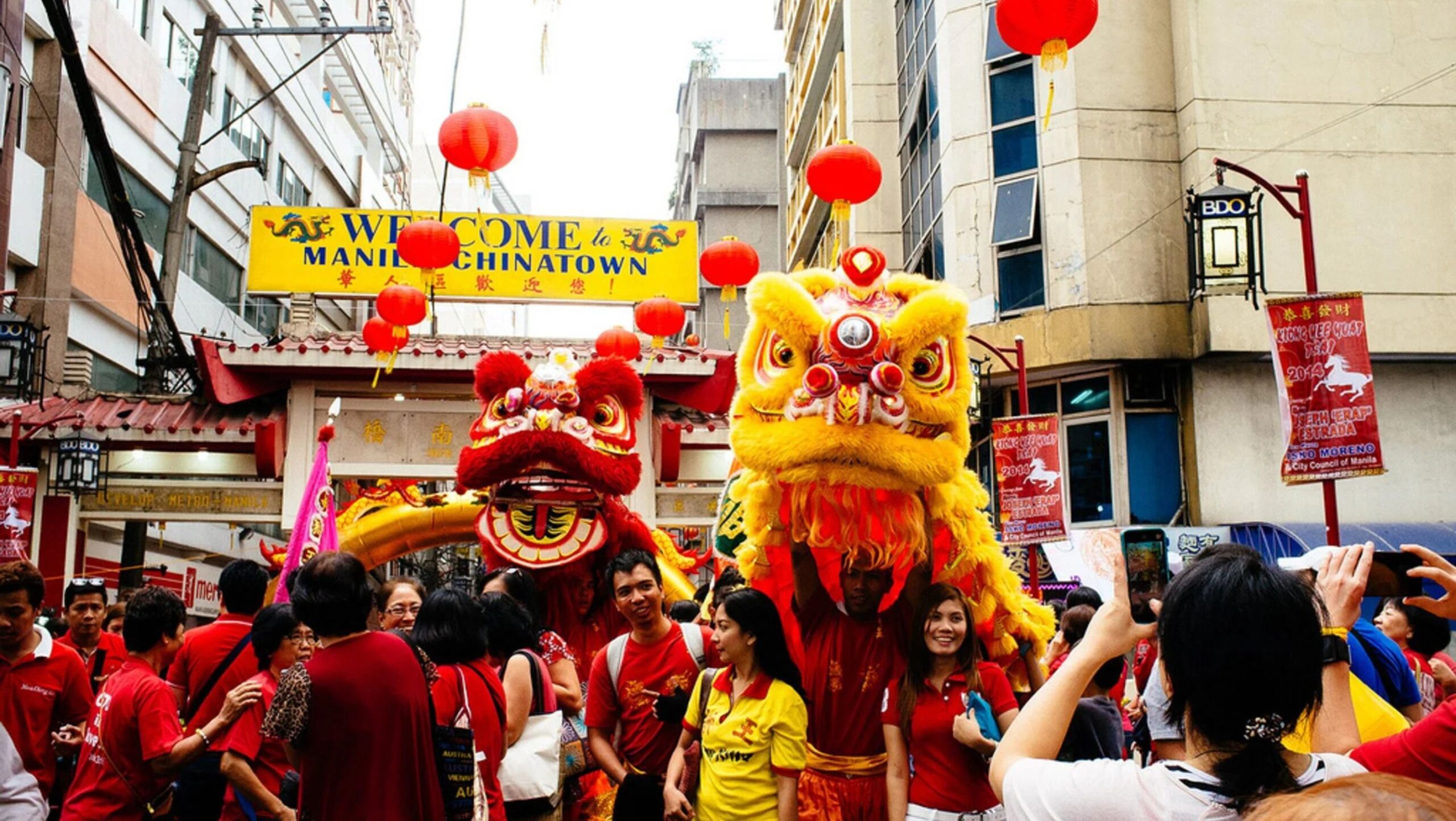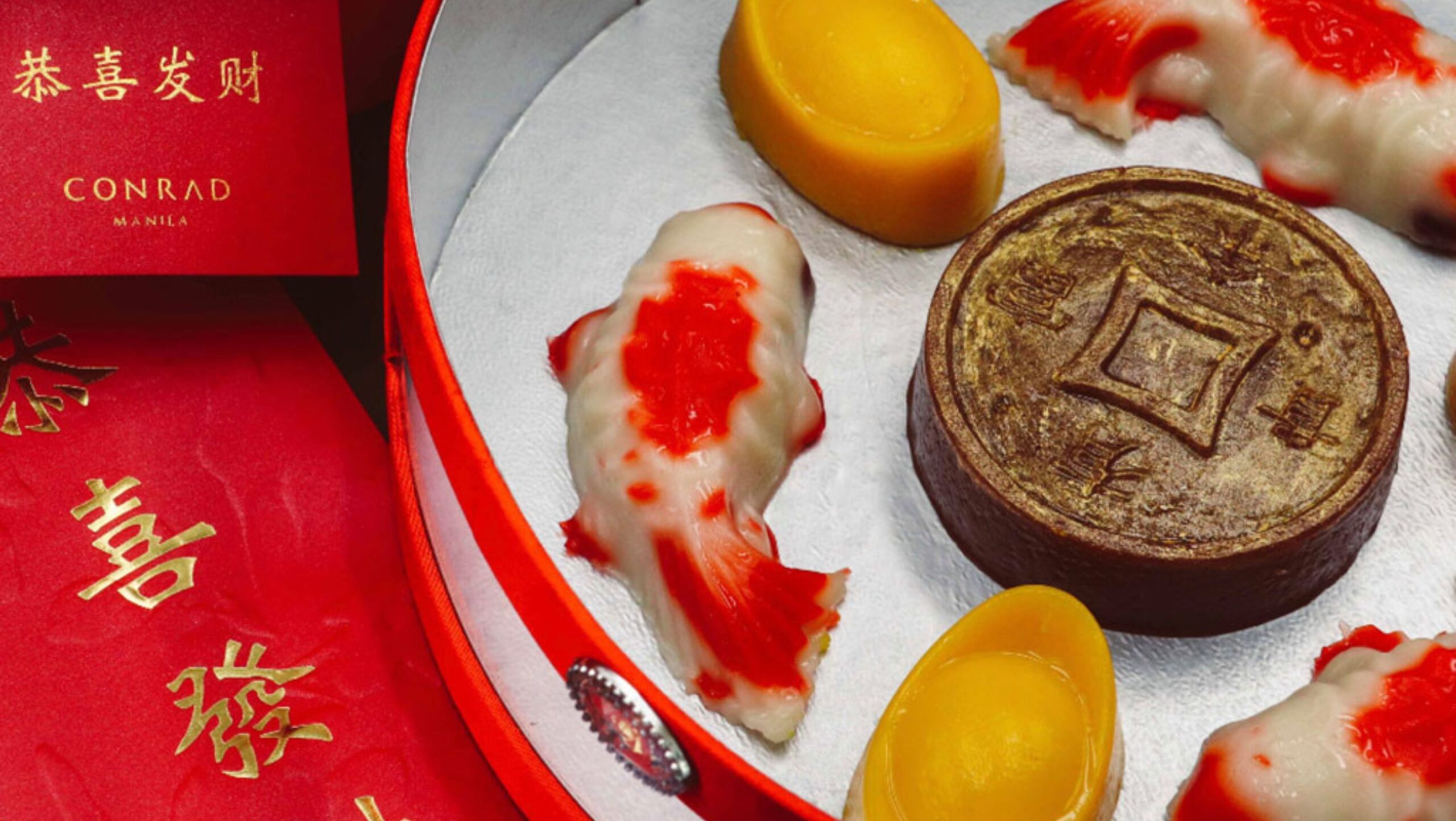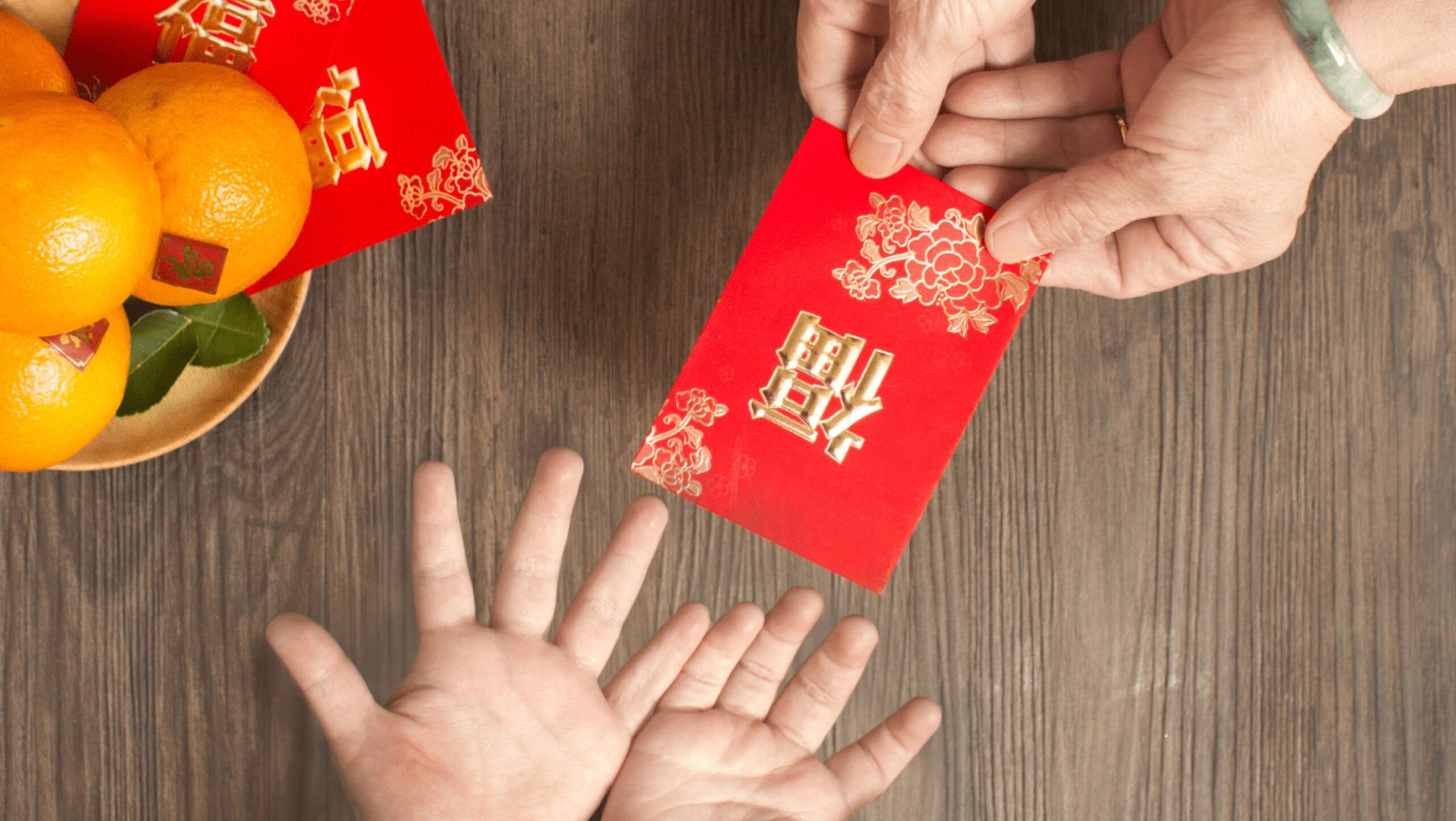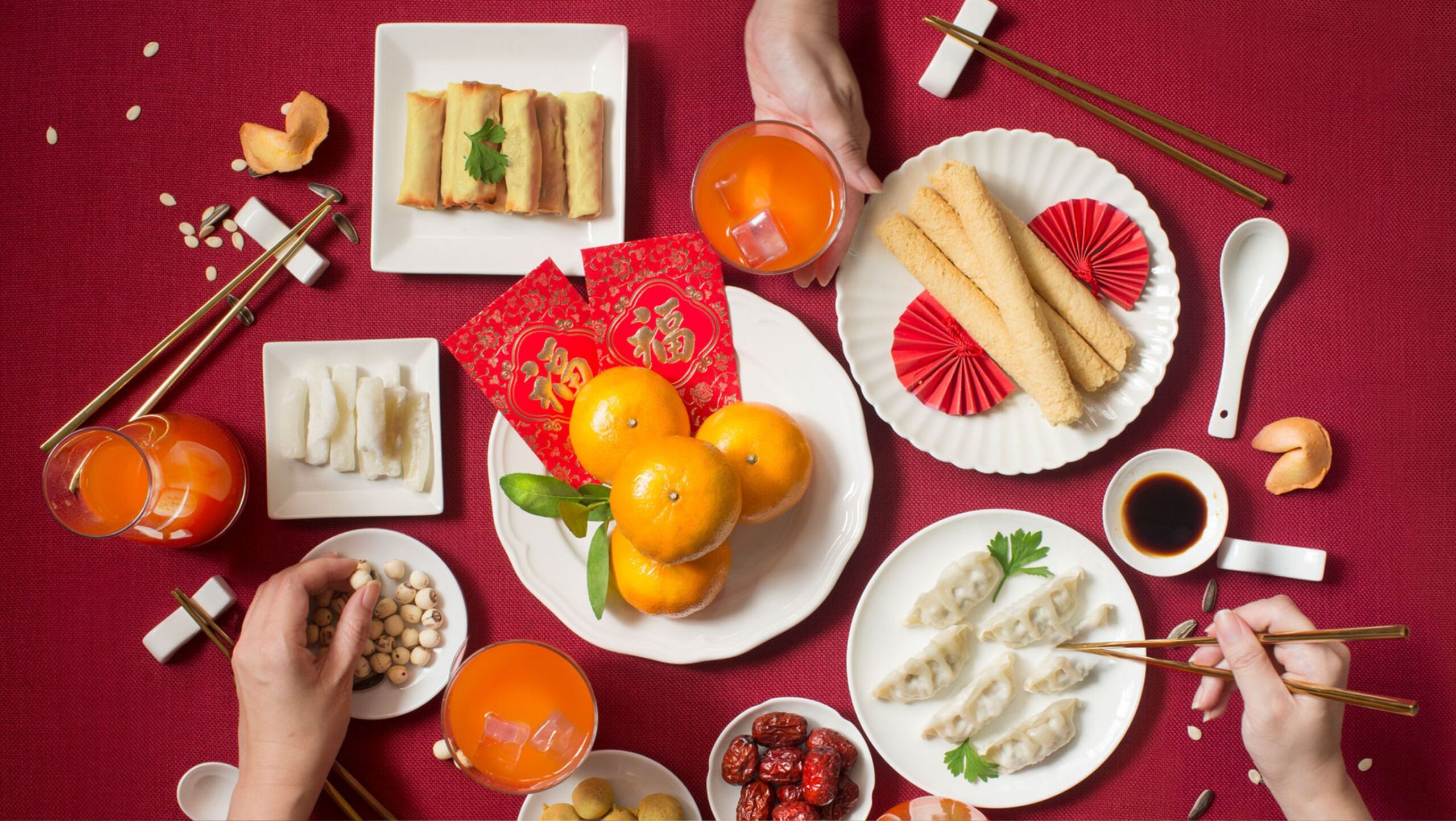When the Lunar New Year rolls around, Filipinos celebrate the Chinese beliefs that good fortune is best celebrated with red, round fruits, and tikoy
Every year, as the Chinese New Year approaches, streets come alive with red lanterns, symbolic dishes grace family tables, and vibrant celebrations welcome luck and prosperity. While these are hallmark traditions of the Chinese New Year, Filipinos also embrace these customs just as enthusiastically. From giving ang pao to preparing 12 round fruits, many of these practices have seamlessly blended into Filipino culture. This blending of traditions traces back to centuries of cultural exchange, trade, and shared values between the Chinese and Filipinos. These practices have since become an integral part of Filipino festivities, reflecting their significance and lasting influence on local celebrations.

RELATED: How to Manifest All the Good Luck Through Fashion in the Year of the Wood Snake
Bridging Cultures, Celebrating Tradition
The Filipino embrace of Chinese New Year traditions reflects centuries of cultural exchange, driven by the significant Chinese-Filipino (Tsinoy) population whose ancestors introduced these customs. Themes of luck, prosperity, and familial harmony align with Filipino values, making the traditions meaningful and widely celebrated. In 2012, the Philippine government declared Chinese New Year a special non-working holiday, further integrating these customs into Filipino culture.

Ahead, the Chinese New Year traditions and superstitions that the Filipinos follow:
Sweep Away Bad Energy
Filipinos have adapted the Chinese belief that a clean house before the New Year brings good fortune—it’s a time to sweep away the bad luck of the past year. However, on the day of the Lunar New Year, brooms and mops are strictly off-limits. Sweeping on this day, they say, is like sweeping away all the good fortune that has just arrived. This superstition has become a serious tradition in many Filipino households, blending tidiness with the hope for a prosperous year ahead.

The Sweet Bond of Tikoy
No Chinese New Year in the Philippines is complete without tikoy—the sticky rice cake that symbolizes unity and good fortune. Filipinos have adopted this delicacy not just as a festive treat but as a thoughtful gift to strengthen relationships. The stickiness of the tikoy is said to bring people closer together, making it a perfect metaphor for family ties and friendships. It’s a delicious reminder of how shared traditions can foster closer connections across cultures.

The Power of Red
Filipinos have also embraced the tradition of ang pao—red envelopes filled with money. In Filipino culture, giving ang pao has also taken on a social aspect, with businesses and communities organizing events where red envelopes are distributed to spread good cheer. It’s a perfect example of how a simple tradition can become a meaningful gesture of generosity.

Additionally, wearing red on Chinese New Year is seen as a powerful way to invite good fortune and prosperity for the year ahead. Red, often associated with happiness, success, and vitality, is believed to ward off bad luck and evil spirits. This vibrant color is a symbol of a fresh start, making it the perfect choice for a celebratory occasion like the Lunar New Year. From red dresses to shirts and accessories, Filipinos don their best red attire with the hope that the color will bring positive energy, ensuring a year filled with abundance and joy. Black or dark colors are avoided, as they are traditionally linked to mourning and misfortune, making red the go-to color for welcoming the bright possibilities of the new year.

Chasing Away Evil with Noise
Filipinos have always had a knack for turning any celebration into a lively affair, so it’s no surprise that the Chinese New Year tradition of fireworks and loud noises has taken off here. Firecrackers, drums, and even pots and pans are used to scare away evil spirits and invite good fortune.

Feasting with Family
The heart of any Filipino celebration is food—on Chinese New Year, Filipinos ring in the festivities with 12 round fruits, each symbolizing prosperity for a month of the year, much like the tradition of the regular New Year. This stems from the Chinese belief that round objects symbolize coins and, by extension, wealth. Filipinos, who love incorporating symbolism into their celebrations, have fully embraced this practice.

Borrowing from Chinese traditions, Filipinos also prepare symbolic dishes like noodles for long life, sticky rice for strong family ties, and fish for abundance. The Lunar New Year feast mirrors the Filipino value of togetherness, where food becomes a bridge between cultures and a shared way to welcome prosperity.
Photos and Featured Image: MEGA ARCHIVES, ROVE.ME, ALL COLOUR ENVELOPES, HONEY COMBERS, HONG KONG TOURISM BOARD (via Website), CONRAD MANILA (via Instagram)










